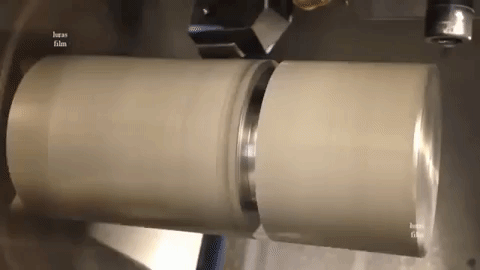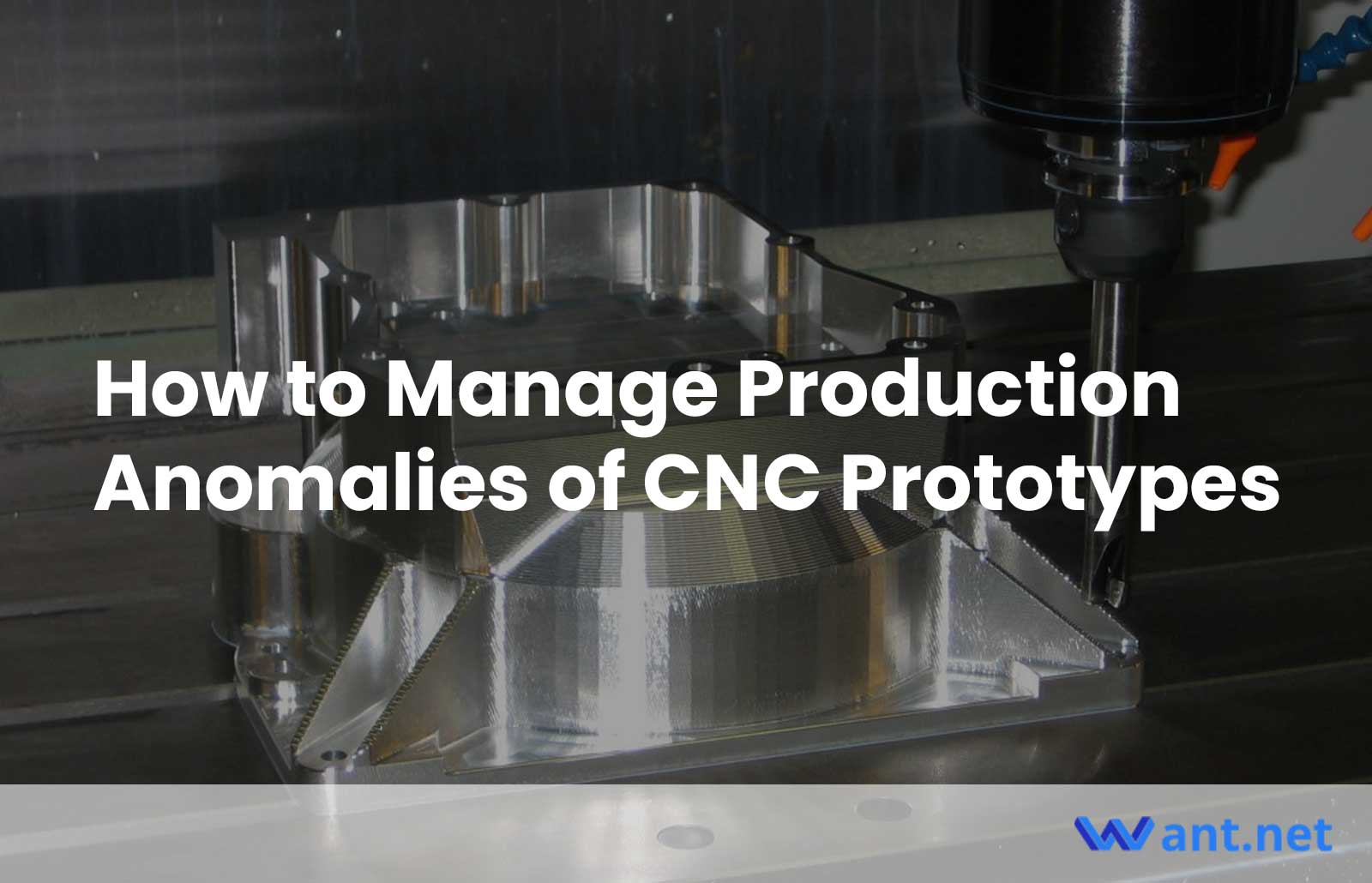Production anomalies can disrupt the smooth operation of prototype shops, leading to errors, emergencies, and uncontrolled situations. To ensure customer satisfaction, these anomalies must be promptly detected, controlled, and resolved. Prototype shops, which primarily handle short-turnaround and low-volume production for regular orders, require specialized management techniques to effectively address production anomalies.
The Importance of Managing Production Anomalies
Production anomaly management on the production site refers to a series of measures and management means developed to detect, control, and solve errors, emergencies, and uncontrolled situations in the production process. Mainly serving regular orders featured with short turn-around and low-volume production, prototype shops have special managements to react to production anomaly cases.
Production anomaly cases at prototype shops can occur in material purchasing, CNC prototyping, production delays, quality control, and more. Any production anomaly in the workflow will have a knock-on effect, ultimately affecting customer satisfaction. Therefore, it is necessary to have spot-to-spot management to respond to production anomalies quickly and prevent their recurrence.
Five Steps To Manage Production Anomalies in Prototype Shops
To minimize the occurrence rates of production anomalies, prototype shops follow a five-step management approach throughout the production flow. These steps ensure a systematic and efficient response to anomalies. Let’s delve into each step:
Step 1 – Preparation
During the preparation phase, prototype shops define anomalies at every process, such as raw material purchasing, CNC programming, CNC machining, hand finishing, etch… This involves identifying potential points of failure and formulating regulations and procedure documents, such as an 8D Report, to address production anomalies effectively.
Step 2 – Anomaly Finding
In this step, various personnel play vital roles in identifying anomalies:
- Timely identification is crucial. Employees must be vigilant in detecting anomalies and promptly notifying the relevant individuals and higher-ups about the situation, including process details, degree of severity, and quantities affected.
- Once an anomaly is identified, decision makers confirm the anomaly on-site and direct emergency response actions.
Step 3 – Actions
After confirming the anomaly, prototype shops evaluate the extent of the loss or impact caused by the anomaly and devise suitable solutions. This step involves coordinating with related departments to implement these solutions within a quick due date.
Step 4 – Causes Tracing and Follow-up
Identifying the root causes of anomalies is essential for preventing their recurrence. Prototype shops diligently investigate possible causes and take preventive measures to avoid similar issues in the future. Furthermore, they ensure ongoing follow-up to assess the long-term effectiveness of the implemented measures.
Step 5 – Topic Meeting for Precaution
To prevent future anomalies, prototype shops conduct topic meetings where all employees learn from the specific anomaly case. These meetings help employees understand how the anomaly occurred, how it was resolved, and, most importantly, how to prevent similar issues in the future.
Possible Production Anomalies And Cases At Prototype Shops
Let’s explore three cases that belong to unrecoverable production for reference:
1. Material Anomalies
At prototype shops, as orders are different from one another, raw materials are usually purchased for each order instead of being stocked. This introduces challenges in sourcing materials from shops that offer a wide variety of options, making it difficult to trace each material accurately.
Consequently, material limitations can lead to possible anomalies. Material purchasing is the first process in production, significantly influencing subsequent steps. Failing to detect material anomalies promptly can result in losses, at least in terms of the order value.
Case:
One customer, who works in the ocean industry, required prototypes made of PE1000. PE1000 has a density lower than water, allowing it to float on the water’s surface. However, upon receiving the finished prototype, the customer noticed that the part unexpectedly sank in water. Further investigation revealed that the material used was PE but added with GF (glass fiber). PE+GF has a higher density than water, causing the prototype to sink. The responsible prototype shop acknowledged the error and replaced the prototype, bearing the associated cost.
To avoid such anomalies, prototype shops can simply test the material’s buoyancy before machining.
2. CNC Machining Anomalies

Most prototype shops rely on provided CAD drawings, 3D data, and 2D drawings for CNC programming. CNC engineers not only program the required structure but also design the tooling routine to ensure effective machining. However, various anomalies can occur during CNC machining, including overlooking micro-features, over-cutting, and under-cutting.
Case:
Consider a CNC-machined tube with lug bosses of 0.5mm height in the sealing ring areas. The original machining steps involved turning the sealing ring to a dashed line area on the lathe, 0.5mm higher than the required ring width, and then milling the lug bosses on a 3-axis CNC machine. Unfortunately, due to over-cutting, the lug bosses were inadvertently removed, rendering the workpiece unusable. To prevent such anomalies, precise control of machining parameters and allowing for a certain cutting degree reserve for adjustments is crucial.
3. Post-finish Anomalies
In-house finishes at prototype shops, such as sanding & polishing, blasting & brushing, painting & printing, laser etching, anodizing, electroplating, chroming, chemical finishing, and powder coating, primarily rely on manual craftsmanship. While manual processes enable customized finishes, they lack the strict control standards of machines, leading to variations in the same finish performed by different individuals or tools.
Case:
For anodized aluminum parts, it is necessary to have hanging points on the surface for anodizing. However, these hanging points inevitably leave indentations on the surface. Typically, the hanging points are positioned on the inside surface, invisible from the outside. However, in certain cases where machined parts require a smooth surface, including specific critical areas for sealing or assembly, the indentations on the hanging points may be considered defects by customers. Moreover, indentations are challenging to rectify due to material removal during anodization.
To prevent such anomalies, prototype shops must pre-confirm the allowable hanging area before production, avoiding assumptions.
Conclusion
The occurrence rate of production anomalies decreases as the management systems of prototype shops mature and accumulate more production experience. When selecting a reliable prototype shop, consider their longevity, preferably opting for those with at least three years of experience. By following the five-step management process and understanding common anomalies, prototype shops can mitigate risks and deliver high-quality products that meet customer expectations.
Recommended Reads:
- Precision CNC Turning Services: Achieving Unparalleled Precision and Efficiency
- Precision 5-Axis CNC Machining in the Automotive Industry
- 9 Advantages of CNC Machining Over Conventional Machining
- How to Optimize Metal Machining Strategies for Improved Prototyping
- CNC Milling: Revolutionizing Automotive Part Production
Other Articles You Might Enjoy
- Bronze Rivet Technology in CNC Machining
Bronze type that can process Rivet Phosphor Bronze Characteristics: High strength, excellent wear resistance, good elasticity. Applications: Springs, bearings, and parts requiring high wear resistance and elasticity. Tin Bronze Characteristics:…
- Precision CNC Machining of Steel: High-Volume Production
Precision CNC Machining and High-Volume Production As an integral part of modern manufacturing processes, Precision Computer Numerical Control (CNC) machining brings about unmatched accuracy and consistency in the production of…
- Custom CNC Machining: Tailoring Solutions to Unique Engineering Challenges?
Introduction to Custom CNC Machining In the manufacturing world, innovations continually emerge and challenge traditional production methodologies. A significant game-changer has been Computer Numerical Control (CNC) machining — a process…






